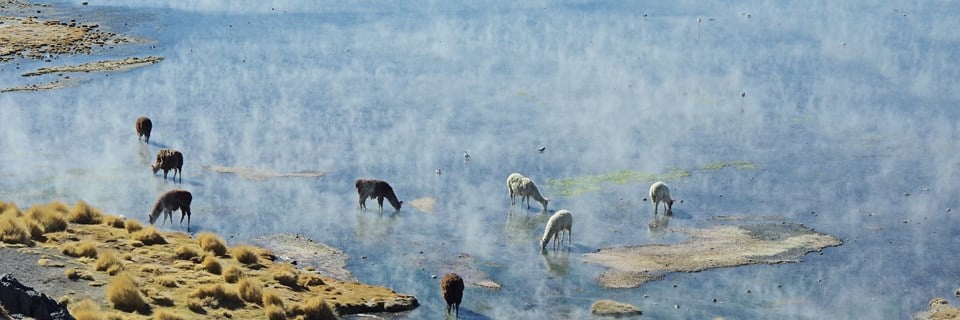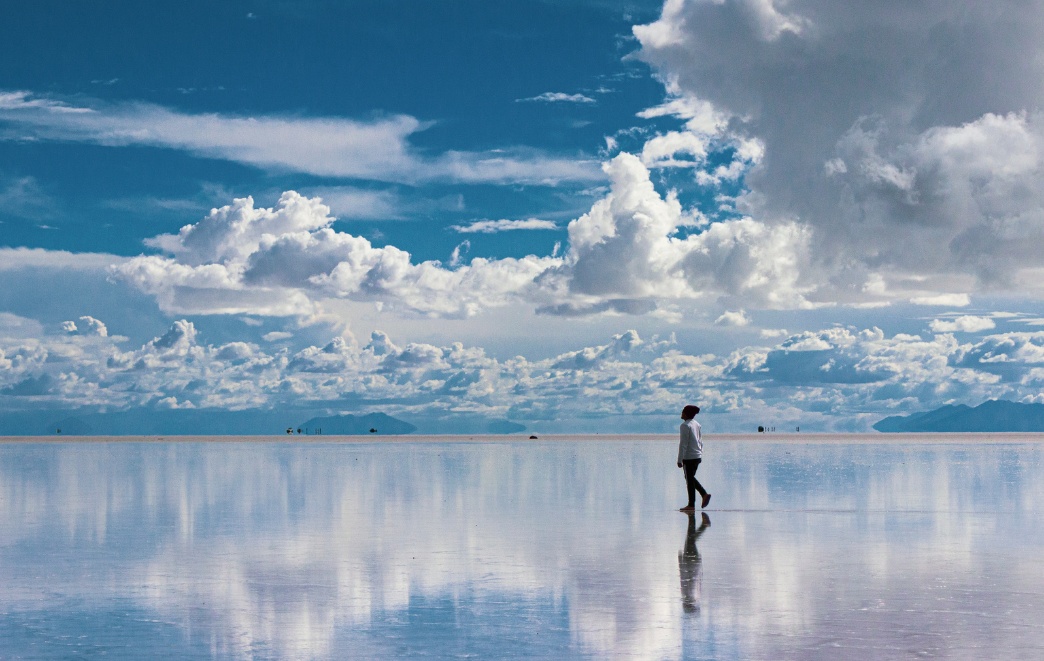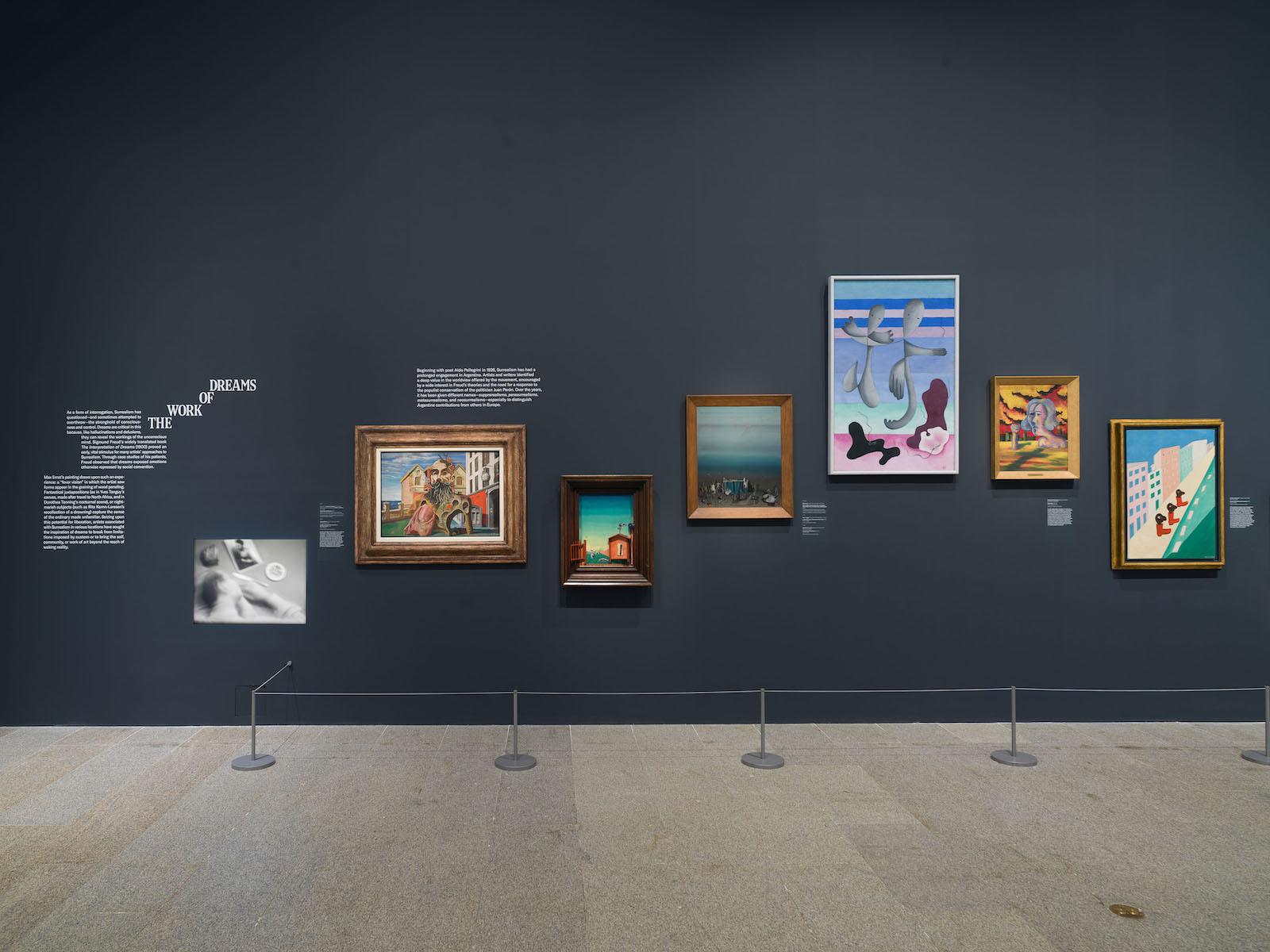Beyond Borders: Why Americans Should Expand Their Horizons to Bolivia
Introduction
Understanding Bolivia's Culture
Bolivia is a vibrant tapestry woven from the rich threads of diverse cultures, traditions, and languages. It is a country where ancient customs coexist harmoniously with modern influences, creating a unique cultural landscape that is both fascinating and inviting. From the highlands to the lowlands, every region offers its distinct cultural flavour.
One striking aspect of Bolivian culture is its emphasis on community and collectivism. You may encounter colourful markets bustling with vendors selling handmade goods, where the sounds of laughter and bargaining fill the air. Interactions are warm and inviting, a testament to the Bolivian spirit of hospitality. Here are some key elements that characterise Bolivia's culture:
- Diverse Ethnic Groups: Bolivia is home to numerous indigenous groups, including the Aymara, Quechua, and Guarani, each with their own languages and traditions.
- Festivals and Celebrations: Cultural festivities reflect the identity of Bolivians, such as Carnival and Inti Raymi—celebrations that highlight the country’s indigenous heritage.
- Artistic Expression: The country’s traditional music, dance, and visual arts tell stories of history and identity.
As you delve deeper into Bolivia’s culture, you will discover an enriching experience that stirs the soul and celebrates the essence of human connection.

The Rich History of Bolivia
Pre-Colonial Era
Before the arrival of Europeans, Bolivia was a cradle of advanced civilisations. The country’s history is steeped in the legacy of the Tiwanaku and Wari cultures, which thrived in the highlands. The Tiwanaku civilization, known for its impressive stone monuments, left behind architectural wonders like the Gateway of the Sun, a site that continues to fascinate archaeologists and tourists alike.
- Tiwanaku Contributions:
- Advanced agricultural techniques, including irrigation and terracing.
- Astounding achievements in astronomy and architecture.
You might even encounter tales of ancient traditions still prevalent today, particularly among indigenous communities. These stories connect the past to the present, fostering a sense of pride and identity.
Post-Independence Developments
Fast forward to the early 19th century, when Bolivia declared independence from Spanish colonial rule in 1825, however, the journey towards a stable and unified nation was fraught with challenges. Frequent political upheavals and territorial disputes marked this period. Key developments included:
- Formation of a Republic: Bolivia transitioned from a colonial territory to an independent republic.
- Constitutional Reforms: Various constitutions were adopted, aiming to establish a democratic framework.
- Natural Resource Exploitation: The discovery of silver in Potosí and gas reserves transformed the economy but also led to social inequalities.
Navigating through these historical milestones offers a glimpse into the resilience of the Bolivian people and the rich cultural heritage they continue to uphold. These events lay the groundwork for understanding modern Bolivia’s socio-political landscape, connecting the past with present-day realities.

Bolivia's Breathtaking Natural Beauty
Discovering the Andes Mountains
When it comes to natural beauty, Bolivia is nothing short of extraordinary. The Andes Mountains, which stretch across the western part of the country, are a highlight for many visitors. These majestic peaks create a stunning backdrop that captivates adventurers and nature lovers alike.
- Adventure Awaits:
- Trekking Opportunities: Popular trails like the Inca Trail and the Cordillera Real offer breathtaking views and exhilarating experiences for trekkers.
- Unique Ecosystems: The high-altitude landscapes host a variety of flora and fauna, including the elusive Andean condor—an iconic symbol of the region.
As you hike through these towering mountains, you may stumble upon traditional villages where the Aymara and Quechua people still practise ancient customs, providing a glimpse into their harmonious relationship with the land.
Exploring the Amazon Rainforest
On the flip side, the Amazon Rainforest is an entirely different realm of beauty and biodiversity. Stretching into Bolivia’s northern region, this lush paradise is a haven for wildlife enthusiasts.
- Wildlife Encounters:
- Spotting exotic creatures such as capybaras, macaws, and even jaguars can be a thrilling experience.
- The diverse plant life includes countless medicinal herbs and towering trees, many of which are endemic to the region.
Venturing into the Amazon, you might find yourself on a canoe, gliding through meandering rivers and surrounded by the symphony of nature. The rainforest pulsates with life, and every sound tells a story. Bolivia’s natural beauty, from the soaring Andes to the verdant Amazon, invites you to embark on an adventure that connects you with the captivating rhythms of the earth.

Bolivian Cuisine and Gastronomy
Traditional Dishes to Try
Exploring Bolivia isn't complete without indulging in its rich culinary heritage that reflects the country's diverse cultural influences. Each region boasts its own traditional dishes, providing a taste of the local culture.
- Salteñas:
- These delightful pastries are a must-try. Filled with savoury meat, potatoes, and spices, they are often enjoyed as a snack or for breakfast.
- Sopa de Mani:
- A hearty peanut soup that warms the soul, often served with chunks of meat and fresh vegetables.
- Pique Macho:
- This dish combines beef, sausage, and fried potatoes, topped with a spicy sauce, catering to spice lovers.
As you savour these dishes, you’ll find that each bite tells a story of tradition and artistry in cooking.
Unique Ingredients and Flavors
What sets Bolivian cuisine apart is its unique ingredients and bold flavours. The diverse geography influences what can be found on the plate.
- Quinoa:
- A staple grain, celebrated for its nutritional value and used in a variety of recipes, from salads to soups.
- Aji:
- This local pepper adds a distinct heat and flavour to many dishes, reflecting the country’s love for spices.
- Chirimoya:
- A tropical fruit that is a true treat, with a sweet, custard-like flavour enjoyed in desserts or fresh.
The vibrant culinary scene of Bolivia invites you to engage your taste buds and explore the local culture. Each meal is not just food; it’s a celebration of the land and its people. So, as you journey through Bolivia, make sure to dive into these traditional delights and discover the intriguing fusion of flavours that awaits you!
Cultural Festivals and Celebrations
Carnaval de Oruro
One of the most spectacular events in Bolivia is the Carnaval de Oruro, a vibrant celebration that blends indigenous traditions with religious observances. Held annually in February, this festival attracts thousands of visitors from around the world, eager to witness its dazzling parades and intricate costumes.
- A Vibrant Display:
- The festival showcases traditional dances like the Morenada and Diablada, embodying stories of struggle and triumph.
- Elaborately decorated masks and costumes reflect Bolivia's rich cultural heritage and invite both locals and tourists to join in the festivities.
Walking amongst the revelers, you can feel the contagious energy that fills the air, as music plays and dancers twirl in rhythm to the beat.
Dia del Mar
In stark contrast, the Dia del Mar (Day of the Sea) is a poignant day of remembrance observed every March 23rd. It commemorates Bolivia’s loss of coastal territory to Chile in the 1884 Pacific War.
- A Day of Reflection:
- On this day, Bolivians gather to honour their history and express a collective hope for regaining access to the sea.
- Events often include speeches, educational activities, and symbolic gestures such as the ceremonial laying of wreaths.
Participating in the observances allows you to grasp the deep sense of national identity and resilience that characterizes the Bolivian spirit. From heartfelt festivities to grand celebrations, these cultural festivals are a lens through which you can appreciate Bolivia's history and community values. Each festival, whether joyous or reflective, invites you to engage and experience the rich tapestry of Bolivian life.
Socio-Political Landscape of Bolivia
Indigenous Rights Movements
Bolivia's socio-political landscape is deeply influenced by its rich tapestry of cultures, particularly the rights movements advocating for the indigenous population. These movements have played a pivotal role in shaping policies and raising awareness about the injustices faced by Indigenous communities.
- Cultural Revitalisation:
- Many indigenous groups, such as the Aymara and Quechua, have fought for recognition of their languages and traditions.
- Celebrations and gatherings often emphasise unity and cultural pride, showcasing traditional music, dance, and attire.
These movements gained significant momentum in 2006 with the election of Evo Morales, Bolivia's first indigenous president, marking a historic milestone. His administration introduced policies aimed at empowering Indigenous communities, yet challenges remain in attaining full equality.
Economic Challenges and Opportunities
Navigating Bolivia’s economic landscape is both complex and promising. The country holds abundant natural resources, including lithium, oil, and gas, which present significant opportunities for growth.
- Challenges:
- Bolivia faces hurdles such as poverty, uneven wealth distribution, and reliance on natural resource extraction, making its economy vulnerable to global market fluctuations.
- Opportunities:
- There is growing potential in sustainable industries like eco-tourism and organic agriculture, which can foster local economies while preserving the environment.
Understanding these socio-political dynamics provides insight into the resilience and aspirations of the Bolivian people. Engaging with these issues allows you to grasp the profound ways in which history, culture, and natural resources intersect, creating a vibrant yet challenging landscape for Bolivia's future.

Adventure Tourism in Bolivia
Trekking Through Salar de Uyuni
Bolivia is undoubtedly a haven for adventure enthusiasts, with the Salar de Uyuni standing out as one of the most remarkable experiences. This vast salt flat, extending over 10,000 square kilometres, creates a surreal landscape that's unlike anywhere else on Earth.
- Unique Experience:
- As you trek across the dazzling white expanse, the endless horizon creates an illusion of walking in the sky.
- During the rainy season, the flats transform into a mirror-like surface, reflecting the clouds above—a breathtaking spectacle!
Many trekkers embark on multi-day tours, exploring the nearby high-altitude lagoons and volcanic landscapes. Each sunset paints a different story, illuminating the endless salt flats.
Climbing Huayna Potosi
For those seeking a thrilling mountaineering challenge, climbing Huayna Potosi is an unforgettable adventure. Standing at an impressive 6,088 meters, it is one of the most accessible peaks for aspiring climbers.
- A Hiking Journey:
- The ascent begins with a trek through lush valleys, giving way to glacial terrain that tests your limits.
- Guided tours provide essential equipment and expert advice, ensuring safety as well as enjoyment.
At the summit, climbers are rewarded with a panoramic view of the Andes—the vastness of the landscape is simply awe-inspiring. Adventure tourism in Bolivia, marked by exhilarating experiences such as trekking through Salar de Uyuni and climbing Huayna Potosi, invites you to connect with nature in its rawest form. Each adventure tells a story of strength, beauty, and wonder that enriches your understanding of this magnificent country.

Art and Handicrafts in Bolivia
Vibrant Textiles and Weaving
Bolivia’s rich cultural heritage is beautifully reflected in its art and handicrafts, with vibrant textiles and intricate weaving standing out as true expressions of identity. The skill of weaving, passed down through generations, showcases the creativity and craftsmanship of indigenous communities.
- A Colourful Legacy:
- Local artisans often use traditional techniques and natural dyes derived from plants, giving their textiles a unique and organic feel.
- Each piece tells a story, with patterns and colours that represent various cultural meanings, such as fertility, nature, and spirituality.
Visiting markets in cities like La Paz or Sucre, you’ll find a treasure trove of colourful blankets, scarves, and tapestries that are not just decorative but also imbued with cultural significance.
Folk Art and Pottery
In addition to textiles, Bolivia is renowned for its captivating folk art and pottery, which reflect the different indigenous cultures across the country. From whimsical figurines to functional pottery, these creations reveal the artistic spirit of the Bolivian people.
- Handcrafted Wonders:
- Pottery often features intricate designs and vibrant glazes, with traditional techniques that use local clay.
- Folk art varies by region, with products ranging from the charming “caretas” (masks) of Oruro to beautifully painted wooden figures from the Amazon.
Engaging with local artisans allows you to appreciate their craft's cultural significance, offering a deeper understanding of Bolivia's rich heritage. Whether you’re weaving through bustling markets or visiting artisan workshops, the artistry of Bolivian textiles and folk art invites you to take home a piece of this vibrant culture. Each hand-crafted item not only beautifies your space but also carries a story of tradition, history, and community.

Sustainable Tourism Initiatives
Community-Based Tourism Projects
As sustainability becomes increasingly important to travellers, Bolivia has embraced community-based tourism initiatives that prioritise authentic experiences while benefiting local residents. These projects enable you to connect with indigenous communities, providing you with an insightful glimpse into their daily lives.
- Meaningful Engagement:
- Participating in workshops led by local artisans allows you to immerse yourself in traditional crafts, from weaving to pottery-making.
- Many community projects focus on reviving ancient agricultural practices, offering visitors the chance to help harvest crops and learn about sustainable farming.
By choosing community-based tourism, you support local economies and foster cultural preservation, ensuring that the rich traditions of Bolivia continue for future generations.
Eco-Friendly Accommodations
Alongside these initiatives, eco-friendly accommodations are on the rise, enabling you to enjoy nature without compromising the environment. Many lodges and hotels emphasise sustainable practices, from conserving water to using solar energy.
- Green Choices:
- Some eco-lodges employ local materials in their construction, blending seamlessly into their natural surroundings.
- Organic gardens provide fresh produce for guests, supporting local agriculture and reducing carbon footprints.
Staying in these eco-friendly accommodations enhances your travel experience while aligning with your values for responsible tourism. Bolivia’s commitment to sustainable tourism initiatives invites you to explore its breathtaking landscapes and rich cultures, all while treading lightly and giving back to the communities you visit. By making conscious choices, you can contribute to a more sustainable future for this incredible country.
Conclusion
In exploring Bolivia, you’ve discovered not just a destination, but a vibrant tapestry of culture, history, and natural beauty. From the breathtaking landscapes of the Andes and the Amazon to the rich culinary traditions and spirited festivals, Bolivia offers experiences that resonate deeply with all who visit.
- Cultural Richness:
- Engaging with indigenous rights movements and supporting community-based tourism allows you to leave a positive impact.
- Embracing the local arts, textiles, and handicrafts enriches your journey and promotes cultural preservation.
By choosing sustainable tourism initiatives, you contribute to the welfare of local communities and the environment, ensuring that the vibrant essence of Bolivia thrives for generations to come.
Take Action
So, as you ponder your next adventure, consider making Bolivia your destination. Immerse yourself in its intriguing history, indulge in its culinary delights, and participate in its adventurous pursuits.
- Visit Local Markets: Seek opportunities to try traditional dishes and purchase handicrafts directly from artisans.
- Book Sustainable Tours: Choose eco-friendly accommodations and community-based tours that benefit the places you explore.
Your journey in Bolivia promises not just beautiful landscapes but a chance to connect with its people and make lasting memories. Join the adventure, and let Bolivia’s magic transform you!
